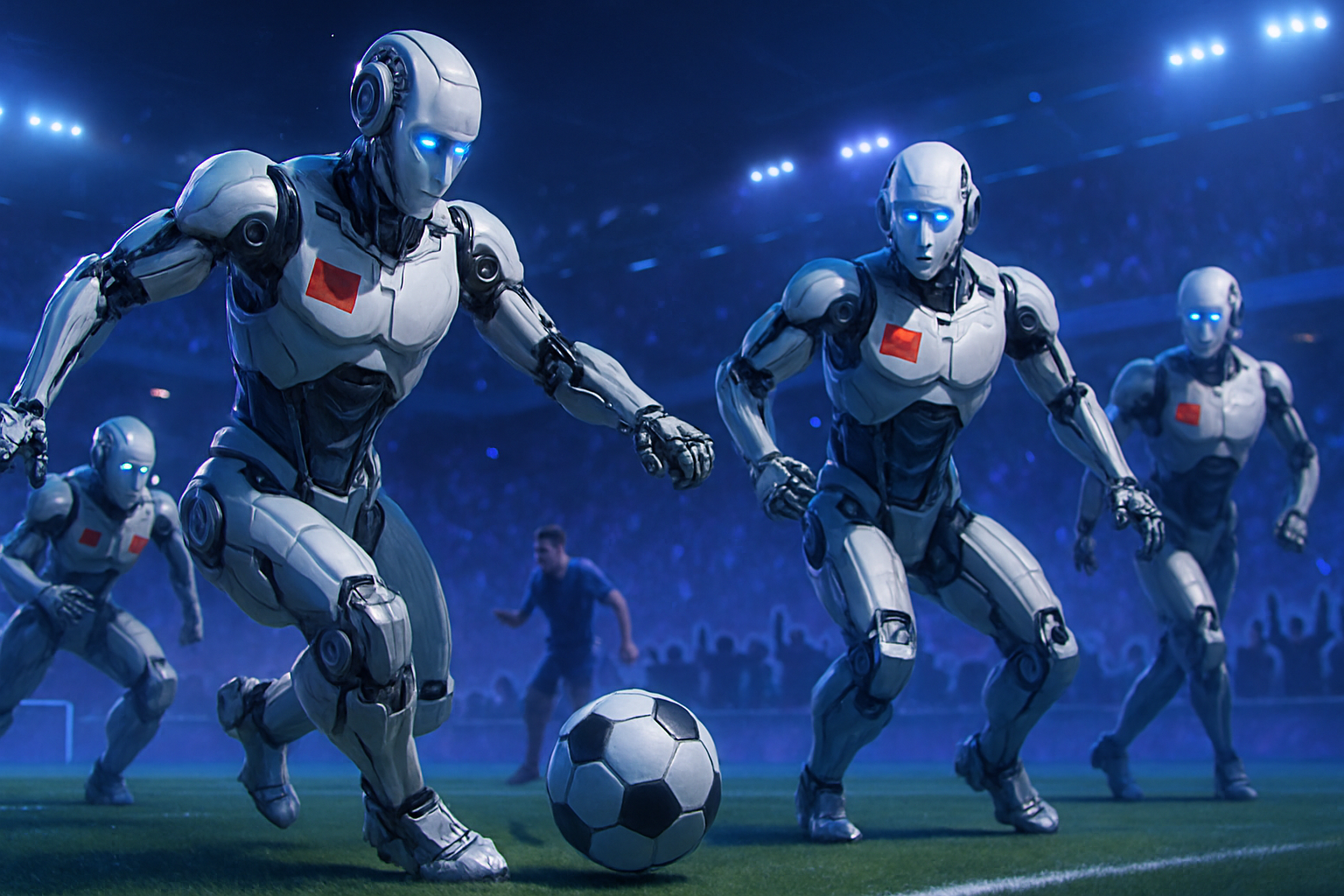Chinese humanoid robots fascinate football enthusiasts, even surpassing the excitement for human teams. The recent competition in Beijing revealed a significant turning point in the technological field, where artificial intelligence brings mechanical athletes to life. The robot teams, equipped with unprecedented autonomy, offer an immersive experience that captivates the crowds. This phenomenon pushes the boundaries of innovation and questions the place of humans in sports.
The robotics competition in Beijing
The teams will compete with the T1 robots from Booster Robotics at the first robotic football competition, RoBoLeague, which took place in Beijing on June 28, 2025. This event drew public attention, particularly due to the advanced technologies that propelled these autonomous machines.
An enthralling spectacle without human intervention
Four teams of humanoid robots participated in fully autonomous 3-on-3 football matches. The teams demonstrated the ingenuity of artificial intelligence with no human intervention. The robots, equipped with sophisticated visual sensors, were able to identify the ball and move around the field with agility.
Some of the robots could get back up after falling. However, several of them required assistance from staff to leave the field on stretchers, adding to the realism of the event.
Promising prospects for artificial intelligence
China is intensifying its efforts to develop humanoid robots equipped with artificial intelligence, using sports competitions as a testing ground. Cheng Hao, founder and CEO of Booster Robotics, emphasized that these events provide an ideal framework for testing algorithms and integrated systems for the future development of robots.
Safety and human interactions
Safety remains a key concern according to Cheng. “In the future, there could be matches between robots and humans. It is essential to ensure a completely safe environment,” he stated. Real interactions between robots and humans would help build public trust in these machines.
Remarkable performances on the field
University teams not only tested their robots but also included custom algorithms for perception and game strategy. The final match saw Tsinghua University’s team, THU Robotics, triumph against the Mountain Sea team from the China Agricultural University with a score of 5-3, thus winning the championship.
Public reactions and perspective on the competition
The public support was palpable, particularly from fans like Mr. Wu, who praised the performances of both teams. “THU played really well, but the Mountain Sea team also offered many surprises,” he commented.
The popularity of humanoid robots surpasses that of human players, reflecting a paradigm shift in the sports world. This competition could herald future innovations in football, where robots and humans could coexist on the playing field, generating increasing interest in artificial intelligence.
Links of interest
The rise of artificial intelligence and humanoid robots can be understood through various relevant articles: NVIDIA and its ascendancy, the emergence of conversational robots, the evolution in programming, robot learning, and Dexterity and its robotic advances.
Frequently asked questions about humanoid robots in Chinese football
What are the main advantages of humanoid robots compared to human players in football?
Humanoid robots are capable of executing complex strategies powered by AI, allowing them to play autonomously without human intervention. Their accuracy in detecting the ball and agility on the field are significant assets.
How are humanoid robot teams evaluated during competitions?
Robot teams are evaluated based on their performance on the field, including their ability to score goals, coordination, and execution of strategies developed by their research teams.
Are humanoid robots capable of learning and improving their performance over time?
Yes, thanks to AI, robots can analyze their performance data and adjust their strategies to improve their game in subsequent matches.
How do robot designers ensure the safety of interactions between robots and humans?
Designers integrate strict safety protocols and test robots in scenarios where interactions are controlled, to ensure that robots act predictably and safely.
Why do robotic football competitions generate so much enthusiasm in China?
Robotic football competitions combine technological innovation and entertainment, attracting a large audience and stimulating interest in advancements in artificial intelligence and robotics.
What technologies are used to equip humanoid robots in these competitions?
Robots are equipped with advanced visual sensors, information processing systems, and AI algorithms for decision-making, allowing them to navigate the field effectively.
What challenges do development teams face when creating humanoid robots for football?
Challenges include creating efficient algorithms for real-time decision-making, developing robust hardware capable of withstanding impacts, and ensuring complete autonomy during matches.
What impact does the performance of humanoid robots have on the perception of football in China?
The success of robots in football competitions contributes to a renewed interest in the sport in China, replacing the past disappointments of national teams with a new form of technological excitement.






